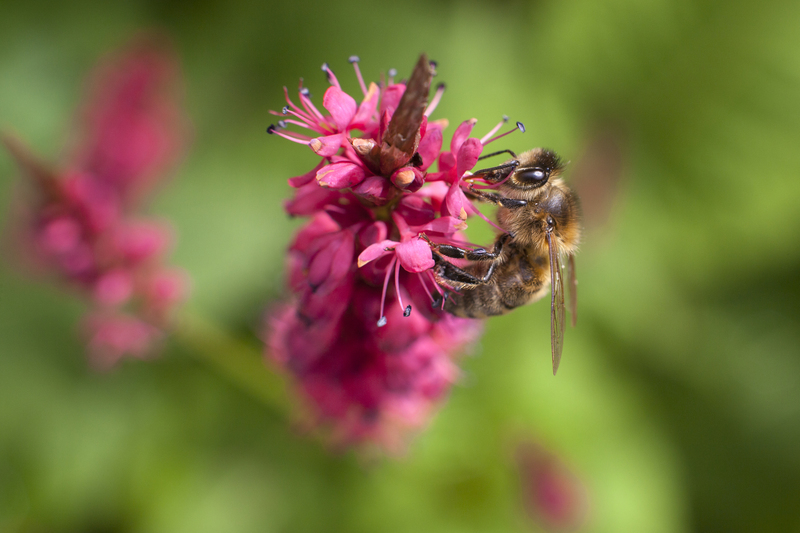Masterful Hedge Trimming: Beyond Regular Shapes
Posted on 14/08/2025
Masterful Hedge Trimming: Beyond Regular Shapes
Hedge trimming is more than a routine garden chore; it's an opportunity for creativity and mastery. Most homeowners are comfortable cutting hedges into simple geometric shapes, but the true art of hedge trimming extends much further. In this comprehensive guide, we'll explore advanced hedge trimming techniques and creative ideas to elevate your landscape from ordinary to extraordinary.
Understanding the Basics of Hedge Trimming
Before advancing to masterful hedge trimming, it's essential to grasp the basics. Proper hedge maintenance not only improves the look of your garden but also ensures the health of your plants.
Why Trim Hedges?
- Encourages dense, healthy growth.
- Maintains the desired size and shape.
- Prevents disease by removing dead or damaged branches.
- Improves air circulation and sunlight exposure.
Essential Tools for Masterful Hedge Trimming
Quality tools make all the difference. The main tools you'll need include:
- Hedge shears: Manual shears for precise cuts.
- Electric or battery-powered trimmers: For large-scale shaping and uniformity.
- Pruning saws: To handle thick branches.
- Loppers: Useful for cutting tough stems and small branches.
- Protective gear: Think gloves, eye protection, and if using electric tools, ear protection.

Moving Beyond Regular Hedge Shapes
Most gardens feature hedges in basic straight lines or simple boxes. However, expert hedge artists use advanced techniques to create living sculptures, from gentle curves to intricate topiaries. Here's how you can start your journey beyond regular shapes.
Creative Hedge Trimming Styles
- Topiary: Shaping hedges into animals, spirals, balls, or whimsical forms. This ancient art is making a modern comeback.
- Wavy Edges: Soft, flowing curves create organic interest and movement in the garden.
- Multi-tiered Hedges: Layered heights add depth and drama.
- Geometric Patterns: Interlocking shapes, diamonds, or zigzags for a contemporary look.
- Mosaic Patterns: Use hedges of varying color or texture to create garden "pictures."
Advanced Techniques for Masterful Hedge Trimming
Achieving show-stopping hedge designs requires more than imagination. Let's review some expert practices used by professional gardeners:
- Wire and Wooden Frames: For complex forms like spirals or animals, use pre-made or custom frames as guides. Shape the hedge around the frame, trimming regularly.
- Layered Trimming: Trim the top and sides at different times to promote thick growth in high-visibility areas.
- Selective Pruning: Cut specific branches to direct new growth, which is essential for intricate shapes.
- Perspective Planning: Consider vantage points--designs look best when viewed from certain angles.
- Staggered Heights: Create a sense of progression and movement with waves or stair-step formats.
Step-by-Step Guide to Advanced Hedge Trimming
Ready to move your hedge trimming skills beyond routine maintenance? Here is a step-by-step walkthrough for masterful hedge shaping:
1. Visualize Your Design
Sketch your desired shape or pattern on paper. For beginners, start with simple curves or spheres before attempting detailed topiaries. Hold your drawing up to the hedge, visualizing the transformation.
2. Mark the Hedge
Use string, chalk, or lightweight frames to outline your trimming area. This ensures symmetry and accuracy, especially for repeating shapes or patterns.
3. Rough Cut First
Make your initial cuts to clear excess growth. Trim lightly, focusing on the general silhouette rather than the final detail.
4. Refine and Sculpt Details
Switch to smaller shears or trimmers. Focus on fine adjustments, always stepping back to assess the shape from a distance. For topiary, this phase may take several sessions over weeks to allow the plant to recover and fill in gaps.
5. Maintain and Adjust
Keep your masterful hedge art healthy--trim regularly but avoid over-pruning. Fertilize and water as needed to encourage lush regrowth and heal any wounds from shaping.
Choosing the Best Plants for Artistic Hedge Trimming
Not all plants respond equally to creative shaping. For master hedge trimming, select varieties with small leaves, dense growth, and good recovery from cutting. Popular choices include:
- Boxwood (Buxus sempervirens) - a classic for tight topiary designs.
- Yew (Taxus baccata) - versatile and rugged, great for complex forms.
- Privet (Ligustrum) - fast-growing and easy to shape.
- Holly (Ilex species) - evergreen and visually striking.
- Cherry laurel (Prunus laurocerasus) - for larger, bold shapes.
Seasonal Timing and Frequency
Timing your hedge trimming sessions is crucial for plant health and the success of advanced designs. Most evergreen hedges are best trimmed once or twice per year--late spring and late summer, avoiding extreme heat or frost. Deciduous species may need more frequent, lighter trims.
- Spring: Best for major shaping and rejuvenation. Trim just as new growth emerges.
- Summer: Refine details and manage growth.
- Autumn: Light touch-ups before the dormant season.
Never trim hedges during freezing conditions or when plants are stressed by drought. This can cause lasting damage and affect their ability to recover.
Tips for Safe and Sustainable Hedge Trimming
Masterful hedge trimming should always respect both safety and the ecosystem. Here's how:
- Check for nesting birds and wildlife before you trim--delay work if nests are active.
- Use sharp, clean tools to minimize plant injury and the spread of disease.
- Compost trimmings or use as mulch to recycle nutrients.
- Avoid excessive shaping during droughts, as plants are more vulnerable.
The Benefits of Artistic Hedge Trimming
Going beyond regular shapes offers several rewards:
- Increased property value: Well-maintained, creative hedges boost curb appeal.
- Personal expression: Your hedges become living art, shaped by your vision.
- Wildlife habitat: Intricate designs provide additional shelter for garden fauna.
- Privacy and noise reduction: Thick, layered hedges offer better screening.
Common Mistakes to Avoid in Advanced Hedge Trimming
Even experienced gardeners can make errors while attempting masterful hedge designs. Steer clear of these pitfalls:
- Over-pruning: Excessive cuts stress the plant and can leave it sparse.
- Poor timing: Trimming at the wrong season may prevent recovery or damage the plant.
- Ignoring maintenance: Advanced shapes require regular touch-ups to look their best.
- Improper tools: Dull or unsuitable equipment results in rough cuts and disease risk.
- Lack of planning: Skipping the design phase often leads to unsatisfactory results.
Showcase: Inspiring Examples of Masterful Hedge Trimming
If you need inspiration for your next project, consider these famous examples of master hedge art:
- The Gardens of Marqueyssac, France: Over 150,000 hand-pruned boxwood hedges form swirling patterns and undulating hills.
- Levens Hall, England: Renowned for massive, centuries-old topiaries--spirals, chess pieces, and abstract forms.
- Chateau de Villandry, France: Ornate parterres and hedged mosaics create elaborate garden "carpets."
These living masterpieces demonstrate that truly masterful hedge trimming comes from a blend of skill, vision, and patience--qualities every home gardener can cultivate.
Masterful Hedge Trimming: The Path Forward
Transforming your garden with expert hedge trimming takes time, practice, and a willingness to experiment. Start small, learn from each season, and draw inspiration from nature and art. Whether you envision classic balls and spirals, undulating hedges, or personalized designs, your efforts will yield unique outdoor spaces that mesmerize visitors and give you lasting satisfaction.

Frequently Asked Questions About Artistic Hedge Trimming
- Q: How long does it take to create advanced hedge shapes?
A: It depends on the complexity and the plant's growth rate. Simple forms take a year or two; intricate topiaries may require several seasons of shaping and guiding. - Q: Can any hedge plant be shaped into topiary?
A: Not all plants are suitable. Choose dense, small-leaved evergreens for best results. - Q: Is power trimming safe for advanced shapes?
A: Power trimmers are suitable for bulk removal and basic shaping, but manual shears are better for detail work. - Q: How do I fix mistakes in my design?
A: Most hedges recover with time. Allow the plant to regrow, then try again, making smaller, more frequent adjustments.
Conclusion: Achieve Mastery in Hedge Trimming
Masterful hedge trimming goes far beyond basic forms. By embracing advanced techniques, creative designs, and regular maintenance, you can turn your garden into a living canvas--a space where imagination thrives and nature takes shape at your hand. With each season, your skills will grow, and so will your enjoyment of this rewarding and artistic gardening discipline.
Ready to step beyond the ordinary and become a hedge-trimming master? Grab your shears, plan your vision, and watch your landscape transform!

